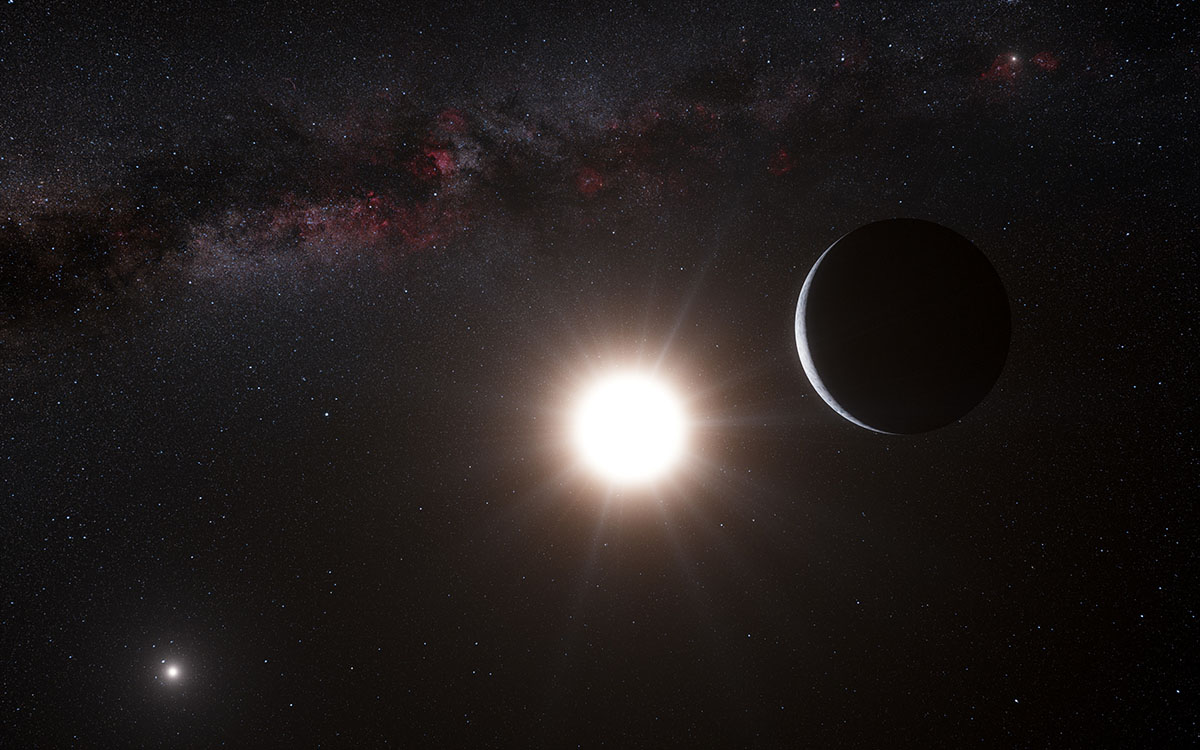so what does alpha centauri’s planet mean for space exploration?

After decades of trying to find out whether our closest stellar neighbors have planets we could one day explore, we finally have a confirmation that there appears to be an Earth-sized planet floating around Alpha Centauri B. If we wanted to get really nitpicky and technical, this is not the closest star to us because Proxima Centauri is slightly closer, but for practical purposes, this is a world which could well be within our reach in the next 50 to 75 years. Now for the bad news. We probably wouldn’t want to go there because its orbital period is about three and a half days, so its basically a planet like Venus but even more hellish, with a surface of molten rock and little to no atmosphere to speak of, likely stripped away by the stellar winds. Still, this is very good news because there is the potential for more planets in the Alpha Centauri system. We’ve seen plenty of planets orbiting binary star systems, and recently, even a world orbiting a quadruple one. We just need to keep looking for gravitational tugs on the stars in longer orbital periods.
Hold on a second, how come we can find planets orbiting hundreds of light years away but our nearest neighbors’ planet count was and still is an open question? Well, in this case being really close is a big problem because the starlight is so bright that it effectively obscures the planets in transit, making it extremely difficult to detect them with our current fleet of telescopes. Alpha Cen Bb was found by measuring the drag the planet has on its parent star, something easier to see at closer orbital periods since the drag is greater, and thus more noticeable, closer in. For more detail on how this method worked in this case, see the Bad Astronomer’s explanation. His major takeaway from this detection is that we’re getting closer and closer to finding a second Earth if we’re able to find planets close to our mass in more and more places as we keep on looking, so it’s only a matter of time before we spy Terra Nova. And I can certainly agree with that, but it’s a more exciting idea for me to consider more planets around the Alpha Centauri system, ones on which we could land a probe or even a habitat capable of supporting astronauts.
This would give us a good target for the first interstellar journey and help move really ambitious designs to make such a trip possible off the drawing board and into a lab. Of course I realize it’s very unlikely that as soon as a cooler world is found around our nearest stellar neighbors we will be seeing NASA and the ESA start planning missions to it. And I’m pretty sure that we won’t just take astronauts and launch them on a multi-generational trip there. We’re going to be trying the most radical propulsion methods we can conceive of and the humans who will land on exoworlds are going to be extensively modified, both genetically and mechanically. But despite all this, just having a closer target to explore would be a terrific incentive to get the projects started. If we’re only able to land on planets tens or hundreds of light years away, the mission time and its basic requirements go up by orders of magnitude over a trip to our nearest neighbors for a relatively quick look-see. Well, relatively quick on a time scale of a civilization that is..





